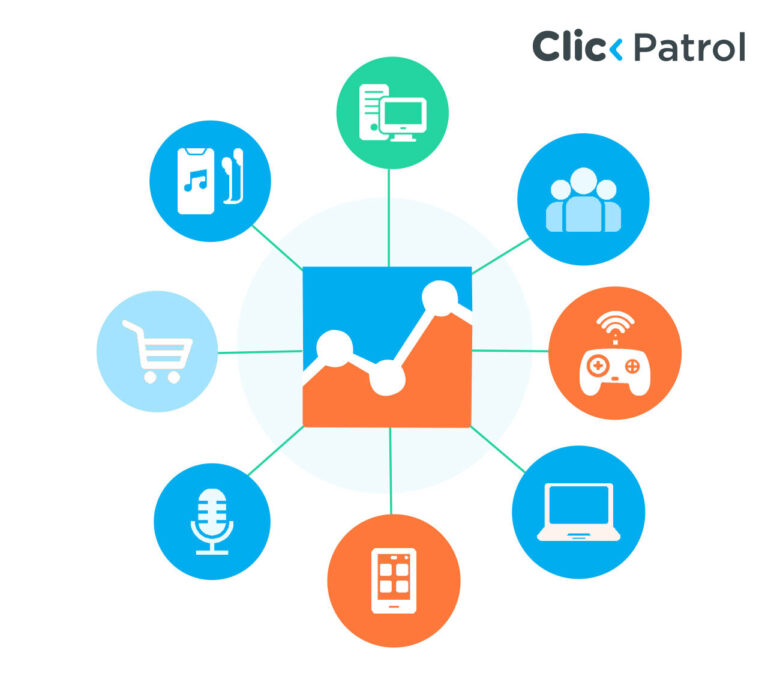
Fake Click Detection Software: Protecting Your Online Ads
Abisola Tanzako | Oct 25, 2024

Table of Contents
Is fake click detection software worth the hype?
Today, no business can deny the importance of online advertising as one of the most powerful means of reaching out to prospective customers for sales. Therefore, Google Ads, Microsoft Ads, and Facebook ads have become top choices for most businesses. Several billion dollars are invested in PPC advertising each year. As the business world has mainly invested in online campaigns, fraudsters and competitors have continuously striven to exploit them through fake clicks that inflate ad costs without genuine conversation.
With this growing trend, fake click software has emerged as an essential protection tool for advertisers’ investments and the optimization of campaign performances. The article will delve deep into what fake click is, why it matters, how fake click software works, and how businesses can use it to safeguard their PPC campaigns.
Understanding fake clicks
Fake clicks occur when individuals or automated bots click on ads with malicious intent. This is done to waste a competitor’s advertising budget, generate revenue for publishers, or alter conversion metrics. This type of click can be broadly categorized into two main types:
- Manual fake clicks: These clicks are carried out by individuals manually clicking on ads. Competitors or even ad publishers can do this to increase ad revenue.
- Automated fake clicks: This is also known as bot fraud. It involves the use of automated bots to generate fake clicks. These bots usually mimic behavior, making it difficult to detect.
Impact of fake clicks
Fake clicks can have significant impacts on businesses; some of these impacts are:
- Financial losses: fake clicks drain the ad budget without generating genuine leads, decreasing return on investment (ROI).
- Skewed analytics: Conversion rates are skewed by fake clicks, making it challenging for companies to assess the true efficacy of their ad campaign.
- Damaged reputation: Fake clicks can negatively impact a business’s reputation. When a business is ravaged by fraud, customers will lack trust.
The rising threats of fake clicks
Fake clicks are one of the significant threats that businesses face. It is an issue that is widespread, especially in industries where the competition is excellent and thus the CPC is high, so the effect of fake clicks is also more significant. Here are a few reasons why fake clicks became so prevalent:
- Ease of implementation: With the rise of bots, click farms, and advanced techniques like click spamming and click injection, it has become easy for fraudsters to carry out large-scale click fraud operations.
- Lack of visibility: Most advertisers are unaware of the extent of the problem or lack the means to detect fake clicks. Fraudulent clicks can look like legitimate user behavior, making distinguishing between genuine and fake clicks difficult without sophisticated detection systems.
- High stakes: The monetary stake is high; for specific industries, such as legal services, insurance, and finance, the CPCs can go upwards of $50-100. This presents a very lucrative opportunity against competitors and unscrupulous publishers who would be able to increase their revenue through dishonest means.
How fake click software works
Fake click software such as ClickPatrol detects, blocks, and minimizes the impact of fake clicks on online advertising campaigns. Most fake click software tools employ advanced algorithms with machine learning through data analysis to find signs that could point to fake clicks.
- Click behavior analysis: Fake click detection software monitors every user interaction with the ad, including click-through rate, device information, session length, and the geographical location of the clicks. When it detects unusual behavior, such as clicks coming from a particular IP address or clicks from a particular location becoming abnormally high, it usually flags these activities for further investigation.
- Tracking IP address: Most fraudsters use particular IP addresses, proxy servers, or VPNs to carry out fake clicks. Fake click software uses detection tools to monitor the IP addresses of users clicking on an ad by filtering and blocking those that appear with suspicious behavior, hence saving the ad budget from further depletion.
- Device fingerprinting: Fake click software also collects data about the devices clicking on the ad, like browser type, screen resolution, and operating system. Therefore, if several fake clicks are reported from the same device or a network of devices, the software can block the devices from viewing the ad in the future.
- Geo-location tracking: Most fake clicks come from specific geographic regions that host click farms or bot activity. Fake click software may track where clicks are coming from and allow businesses to block certain locations from their campaigns, thus limiting exposure to these high-risk regions.
- Detection of bots: Automated programs or bots are the most commonly used tool for generating fake clicks. Advanced fake click software uses bot detection techniques to identify non-human traffic and ensure advertisements are shown and clicked only by valid users.
- Blocking and reporting: Once an anomaly is detected, it blocks suspicious users and IP addresses viewing any ad. It creates comprehensive reports for advertisers on how widespread the fraud was and what remediation activities were performed to prevent further fraud.
- Integration with ad platforms: Most fake click software easily integrates with major ad platforms such as Google Ads, Microsoft Ads, and Facebook Ads. That way, an enterprise can easily manage and protect its campaigns on several networks within the same console.
Key benefits of fake click software
Fake click software comes with numerous benefits targeted at helping businesses secure their investment in advertising.
- Cost savings: The consequences of detecting and preventing fraudulent clicks prevent businesses from spending on advertisement budgets for non-genuine users. This results in wiser ad spending and higher ROIs.
- Improved campaign performance: Fraudulent clicks that commonly distort campaign metrics will be fewer, allowing the business to ascertain a proper view of how the advertising is doing.
- Active protection: Most fake click solutions monitor and block fraudulent activities. This allows businesses to act on fraud immediately and not wait until the damage is done.
- Comprehensive reporting: The detailed reports that fake click software generates are quite enlightening and give valuable insight into the nature and size of fraudulent activities.
Effective fake click software solutions
Several companies specialize in developing fake click detection tools, each offering unique features tailored to different advertising needs. Below are a few leading fake click software solutions available on the market:
ClickPatrol
ClickPatrol is an ad fraud detection solution powered by AI, protecting PPC campaigns from fake traffic. Advanced algorithms block fake clicks, and analytics give advertisers visibility to monitor the quality of the traffic and look out for suspicious behavior. With integrations across major platforms, including Google Ads and Facebook Ads, ClickPatrol offers custom settings, advanced reporting, and proactive fraud prevention.
Lunio.ai (Previously PPC Shield)
Lunio.ai detects fake clicks using a data-driven methodology. Through extensive data analysis of your advertising campaigns, it finds trends that point to fraudulent activity, saving businesses substantial money by preventing fake clicks from wasting their budgets.
ClickGuard
ClickGuard offers many types of protection for Google Ads campaigns. Its feature list includes customizable fraud filters, automated IP blocking, and real-time fraud detection. It analyzes user behavior to spot suspicious patterns and allows the advertiser to define their specific criteria to detect fake clicks.
How to choose the right fake click software
Determining the proper click fraud software depends on several factors, including the size of the business, the extent of the ad campaigns, and the advertising platforms where the ad is shown. The main considerations are:
- Platform integration: Ensure the selected software will work with the used ad platforms, such as Google Ads, Microsoft Ads, or Facebook Ads. This will ensure seamless protection across all campaigns.
- Active monitoring: Look for software that monitors and blocks to help prevent fraud when it occurs.
- Customization: A few fake click tools support business customizations based on customer needs. This is useful to fit the software in an explicit industry or region.
- Reporting and analytics: A solution that provides detailed reports and analytics should be selected, allowing one to understand the origin of the fraud and further optimize the campaigns.
- Ease of use: The user-friendly interface allows the user to navigate and integrate the system easily without requiring deep technical knowledge.
The role of fake click software
Fake clicks are a mounting problem in digital advertising, and fraudsters get even more sophisticated yearly. Most businesses need to invest money in tools that will protect their ad spend. Fake click software is crucial because it detects and prevents fraudulent clicks, allowing businesses to focus on actual customers and drive real results.
Fake click detection software protects advertisers’ campaigns, reducing ad waste while showing the correct marketing performance metrics. Investing in fake click software is one of the important steps a business needs to take to stay competitive and ensure maximum ROI.
FAQs
Q. 1 How does fake click software detect fraudulent clicks?
Fake click software uses AI and machine learning to analyze traffic patterns and identify abnormalities, such as repeated clicks from the same IP address or bots. It subsequently blocks fraudulent clicks to protect advertising budgets.
Q. 2 Why is fraud prevention in advertising important?
Fake click prevention ensures that only real users interact with the ads. This optimizes the ad spend by ruling out fake traffic, hence providing better campaign performance.o





